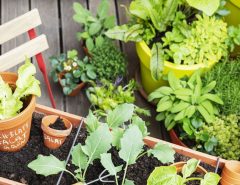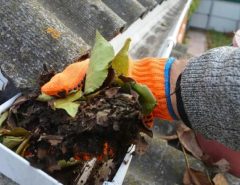Are you ready to embark on the journey of caring for anthurium plants? These beautiful tropical plants, with their glossy heart-shaped leaves and vibrant flowers, can be a stunning addition to any indoor or outdoor space. In this article, we will provide you with a comprehensive guide on anthurium care, ensuring they stay healthy and thrive in their environment. So, let’s dive in!
Understanding Anthurium Plants
Anthurium plants are a beautiful addition to any garden or indoor space. It’s important to keep them healthy and thriving, so here are some care tips to keep in mind. First, make sure to place your anthurium plant in a well-lit area with indirect sunlight. Water it regularly, but be careful not to over-water it, as this can cause root rot. Additionally, adding fertilizer to the soil every few months can help promote healthy growth and vibrant blooms. Lastly, if you’re looking for a unique twist, consider adding a black dragon rose anthurium plant to your collection. Its dark red spathes and contrasting spadices will make a stunning addition to any space.
Choosing the Right Location
Anthuriums thrive in bright, indirect light. They can be kept indoors near a window that receives filtered sunlight or placed outdoors under a shade to protect them from direct exposure to the sun. Avoid placing anthurium plants in areas with extreme temperature fluctuations or near air vents that can cause drafts. It’s crucial to find the perfect spot that provides the right balance of light and temperature for your plants.
Optimal Temperature and Humidity
Anthuriums prefer a warm and humid environment. Ideally, the temperature should range between 70°F (21°C) and 90°F (32°C) during the day and should not drop below 60°F (16°C) at night. Regular misting of the leaves can help maintain the desired humidity levels. Placing a tray of water near your plants or using a humidifier can also enhance the humidity around them.
Watering and Soil Requirements
Proper watering is essential for anthurium plants to thrive. It is recommended to water them when the top inch of soil feels slightly dry. Overwatering can lead to root rot, while underwatering can cause wilting. Use well-draining soil that retains some moisture but doesn’t become waterlogged. A mixture of peat moss, perlite, and orchid bark can be an excellent choice for anthuriums.
Fertilizing Your Anthurium Plants
Fertilizing is essential to provide the necessary nutrients for your anthurium plants’ growth. During the growing season, which usually spans from spring to early fall, fertilize your plants every two to four weeks with a balanced, water-soluble fertilizer. Reduce the frequency to once every two months during the dormant period. Remember to follow the manufacturer’s instructions for the correct dosage to avoid over-fertilization.
Pruning and Propagation
Regular pruning helps maintain the shape and size of your anthurium plants. Remove any yellow or withered leaves to prevent the spread of diseases. If your plant becomes too large, you can also trim back the stems to keep it more compact. Propagation of anthuriums can be done through division or stem cuttings. Ensure that the cuttings have at least two leaves and a node for successful propagation.
Dealing with Common Pests and Diseases
Like any other house plants, anthuriums can be susceptible to certain pests and diseases. Aphids, mealybugs, and spider mites are common pests that can affect your plants. Regularly inspect the leaves for any signs of infestation, such as webs or sticky residues. If you spot any pests, treat them with a gentle insecticidal soap or neem oil. Fungal diseases, such as root rot or leaf spot, can occur due to overwatering or high humidity. Ensure proper drainage and avoid waterlogging to prevent these issues.
Conclusion
Congratulations! You are now equipped with the knowledge and tips needed to care for your anthurium plants. Remember to find the ideal location with the right balance of light and temperature, provide adequate humidity, water your plants appropriately, and fertilize them regularly. Don’t forget to prune when necessary and be on the lookout for pests and diseases. By following this comprehensive guide, your anthuriums will thrive and bring beauty to your space for years to come.
FAQs
- Can I grow anthurium plants outdoors?
Absolutely! Anthuriums can be grown outdoors in suitable climates. Just make sure to provide shade and protect them from extreme temperatures. - How often should I mist my anthurium plants?
Misting the leaves of your anthurium plants once or twice a week will help maintain the desired humidity levels. - Are anthurium plants safe for pets?
No, anthurium plants can be toxic to pets if ingested. Keep them out of reach of curious animals. - Can I grow anthurium plants from seeds?
While it is possible to grow anthurium plants from seeds, it can be a challenging and time-consuming process. It is more common to propagate them through division or stem cuttings. - How often should I repot my anthurium plants?
Anthurium plants generally need to be repotted every two to three years or when they outgrow their current containers. Use fresh potting mix and a container slightly larger than the previous one.
Remember, caring for anthurium plants can be a rewarding experience. Enjoy the journey of nurturing these beautiful tropical plants and witnessing their vibrant blooms throughout the year.
Tags: anthurium care, anthurium care brown leaves, anthurium care indoor, anthurium care outdoors, anthurium care tips, black anthurium care, pink anthurium care, queen anthurium care, red anthurium care



